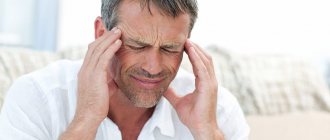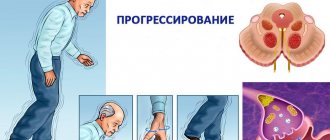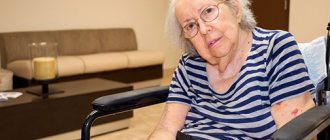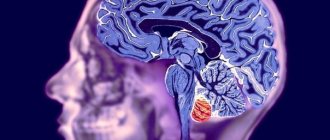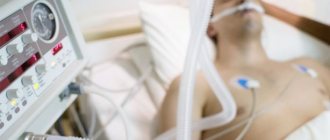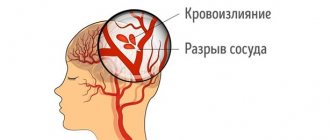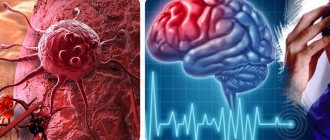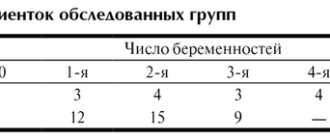Acute disruption of cerebral blood supply, currently a common life-threatening condition. Strokes cause loss of performance and disability, significantly worsening the quality of life of both the patient and his family. In addition, acute disruption of cerebral blood supply most often causes death, after coronary heart disease. The consequences of a stroke are very varied. It can be either immobilization or hearing loss, but depending on the scale, one can assume that the condition is reversible.
Neurologists at the Yusupov Hospital have been caring for stroke patients for a long time. The rehabilitation period in our hospital takes place in a favorable atmosphere, specialists develop an individual program, modern simulators are used, the staff provides all types of assistance, including psychological. Doctors at the Yusupov Hospital will answer all questions about prevention, both primary and secondary, treatment, and management of the recovery period.
Statistics
The first month is the most dangerous, since during this period there is a high probability of death of the patient (read about periods of stroke here). You can recover from an ischemic stroke much faster than from a hemorrhagic stroke. Positive dynamics are possible only if you follow the doctor’s recommendations.
After a hemorrhagic stroke, one third of patients die within a year.
Important! According to statistics, the average life expectancy after a stroke is from five to ten years, depending on complications.
Precursors of stroke
Symptoms before an attack appear within a few days. However, many do not pay attention to them, because the signs of an impending stroke disappear on their own.
How to recognize the proximity of a “blow”? The most important harbingers:
- headaches that appear suddenly and go away quickly;
- weakness unexpected for a person;
- causeless nausea;
- short-term dizziness;
- frequent mood changes.
You also need to pay attention to symptoms such as:
- visual and hearing impairments;
- slow pulse;
- numbness of the limb;
- flushes of blood to the face;
- disturbance of speech function or coordination of movements;
- severe sweating.
If you have these symptoms, you should immediately consult a doctor, as it is still possible to prevent a stroke.
Within 3 hours from the moment of formation of a brain lesion, acute manifestations of a close “impact” occur:
- difficulty swallowing;
- unbearable headache that leads to fainting;
- severe dizziness;
- vomit;
- convulsions;
- breathing problems;
- tachycardia.
At this stage, the victim requires urgent hospitalization. With timely provision of first aid, the likelihood of severe complications will be reduced.
Lifespan
It is impossible to say exactly how long a person will live after a stroke.
However, when the disease recurs, rehabilitation is more difficult (read about how many strokes a person can suffer in this material). According to statistics, life expectancy reaches more than ten years. The percentage of pathology and mortality is quite high. In the first month, 30 percent of patients die, and within a year, about half die. A new attack occurs in 10 percent of patients. In case of relapse, death occurs within six months in 70 percent.
Expert opinion
Zemlyanukhina Tatyana Vyacheslavovna
Ambulance and emergency paramedic at the Clinical Emergency Hospital #7 in Volgograd.
Ask an expert
Any condition, even such a critical one, is not a reason to say goodbye to a person or count down the days until his death. Science knows many examples of people returning to their normal lives despite having suffered a stroke. Life expectancy for each person will be individual and it does not even depend on gender, age or other indicators. The sooner you begin to take measures to rehabilitate and eliminate the consequences, the higher the likelihood of partial recovery.
For illness on the left side
There is no exact answer to how long you can live, but survival will depend on:
- Pathologists.
- Localizations.
- Patient's age.
Up to 80% of patients survive a year after a stroke.
Right side
After a stroke on the right side, 70-80 percent of patients survive. A second stroke is statistically often the cause of death. About 50% of people can live 5-7 years.
Quality of life after stroke
Quality of life after a stroke is determined by several factors:
- The degree of loss of function;
- Possibility of self-service;
- Possibility of movement;
- Depression;
- Pain or discomfort;
- Daily activity.
People after a stroke require constant support, both physical and psychological. With prompt diagnosis, proper treatment and rehabilitation, patients recover successfully and return to their normal lifestyle. Doctors at the Yusupov Hospital will answer all your questions and create an individual treatment plan.
Dependence on complications and consequences
The ability to regain skills depends on brain damage. The forecast will depend on:
- Severity of damage.
- Volume of damage.
- Social factors.
- The patient's motivation to work on himself.
After a stroke, about 8 percent return to work. Half of the patients have limited ability to work and require constant assistance and care.
Attention! With extensive hemorrhage and cerebral edema, the prognosis will be disappointing. In most cases, everything ends in death.
If the body is paralyzed
In case of acute disturbance of left-sided cerebral circulation, speech suffers. More attention is paid to this problem than with other manifestations of the disease.
Patients with disorders of the left side often end up in the hospital and live no more than five to seven years. The right side is responsible for movement, so there is paralysis of the left limbs. The death of neurons leads to the fact that the patient does not remember past information and is lost in time and space. In this case, life expectancy depends on care.
For dementia
In severe strokes, consciousness may be absent. The disturbances will progress, and cerebral edema is fixed.
Most often, recovery in this case is almost impossible. Life expectancy depends on care, but on average it ranges from one to three years.
In a coma
If the patient is in a coma, the likelihood of further recovery is very low and he is unlikely to survive. Typically, such patients survive two weeks after the attack.
Find out more about the consequences of a stroke in this material.
Prognosis after stroke
People who have suffered a stroke cope with the rehabilitation period differently. The recovery period can take a lot of time, but in any case it is a very labor-intensive and energy-consuming process. The program is developed both for classes in the hospital with a specialist, and for home exercises with relatives or a caregiver. If a vascular accident has led to immobilization, then the person caring for the patient is trained in the specifics of care, for example, how to prevent bedsores, how to change bed linen, how to carry out hygiene procedures, etc. The prognosis will depend to some extent on the quality of implementation of the recommendations and the correctness of the developed program.
It is important to understand that it is not always possible to achieve complete restoration of function, but one should not despair. The experience of specialists at the Yusupov Hospital testifies to the effectiveness of rehabilitation, because many patients managed to get results in the form of the ability to self-care, return to work, and learned to speak again. Observations indicate that the attitude and attitude of the patient and his relatives towards rehabilitation is very important - the more serious and responsible they are, the better the result. The first trimester after a stroke is the peak of neurological recovery, when, if all recommendations are followed, it is possible to return half of the basic functions, in the next trimester - 20-30% and in the next six months - 20%. But still, how long they live after a stroke, how much function will be restored, can only be guessed in each specific case.
Statistics for seniors over 80
The prognosis for the older generation is disappointing. High risk of death. But still, how long do they live after a recurrence of the attack? The answer is below. If a recurrent stroke occurs, the average life expectancy is no more than seven days. The older the person, the less chance of recovery.
The chances of surviving a stroke in older people over 80 are minimal.
It all depends on the overall picture of the disease. Some survive only six months after their first stroke.
Treatment of recurrent stroke and recovery after relapse
If there is a second stroke, the medical tactics are the same as for the first stroke. The patient must be hospitalized and placed in the intensive care unit (or intensive care unit). If it is necessary to lower blood pressure, antihypertensive drugs are administered intramuscularly or intravenously. Magnesium sulfate is used to combat cerebral edema. Recurrence of a hemorrhagic stroke requires measures to stop the bleeding. The patient is administered Aminocaproic acid, Vicasol or Etamsilate.
In case of repeated ischemic stroke, drugs that dilate blood vessels are indicated; they help to use reserves in the form of collateral vessels. The patient is administered vitamin PP, Drotaverine (No-Shpa), Eufillin, Papaverine and Complamin. To normalize blood viscosity, Reopoliglucin solution is used intravenously. Vascular tone is effectively restored by Vinpocetine and Cavinton.
Please note: Cortexin, Aminalon and Cerebrolysin are indicated for the restoration of nerve cells after 2 strokes. These drugs minimize the harmful effects of hypoxia on neurons.
With a second stroke, recovery is slow. After discharge home, the patient should be under the supervision of a neurologist. Rehabilitation requires the participation of an experienced psychotherapist. Patients who realize the severity of their condition tend to become depressed, and this only slows down the healing process. A patient who has suffered a stroke is taught relaxation techniques. Classes with a specialist allow you to stabilize your psycho-emotional state and create a positive attitude, which contributes to the speedy restoration of lost functions.
The text was checked by expert doctors: Head of the socio-psychological service of the Alkoklinik MC, psychologist Yu.P. Baranova, L.A. Serova, a psychiatrist-narcologist.
CAN'T FIND THE ANSWER?
Consult a specialist
Or call: +7 (495) 798-30-80
Call! We work around the clock!
How can you increase your chances?
Each person is individual and their body copes with illness differently. Some stop walking and working, while others simply become less active. Anyone can recover, the main thing is to follow the doctor’s recommendations and listen to your body.
The sooner you start rehabilitation, the faster your brain will recover. In the beginning, gymnastics and massage will help. The rehabilitation program includes exercise therapy and classes on robotic simulators.
Important! Stroke also affects the psyche. Often, the help of a psychiatrist is required.
Symptoms of a recurrent stroke
A person who has previously had a stroke should call an emergency team if the following signs occur:
- numbness or paralysis of individual muscles or parts of the body;
- sensory disturbance (usually unilateral);
- a sharp drop in visual acuity in one eye;
- nausea and vomiting not associated with food intake;
- impaired coordination of movements;
- violation of diction (unintelligible pronunciation);
- loss of consciousness.
What does the deadline depend on?
- Patient's age. A young body is more resilient and the younger the age, the faster the recovery process (read about why stroke affects children and people under 30 years of age in this material).
- Consequences of a stroke. Keeping a sick person in a supine position provokes bedsores, and an acute respiratory infection can turn into pneumonia.
- Proper organization of life. It is necessary to create a safe environment for the patient and prevent falls and injuries. Older people's bones do not heal well and take longer to heal.
- Healthy lifestyle. The patient should give up alcohol and fatty foods in order to speed up recovery (read about whether you can drink alcohol after an attack and whether a stroke occurs due to alcohol consumption). You need to eat more vegetables and fruits.
Our experts have prepared articles about the types of stroke, signs and treatment of this disease, as well as prevention and risk factors.
